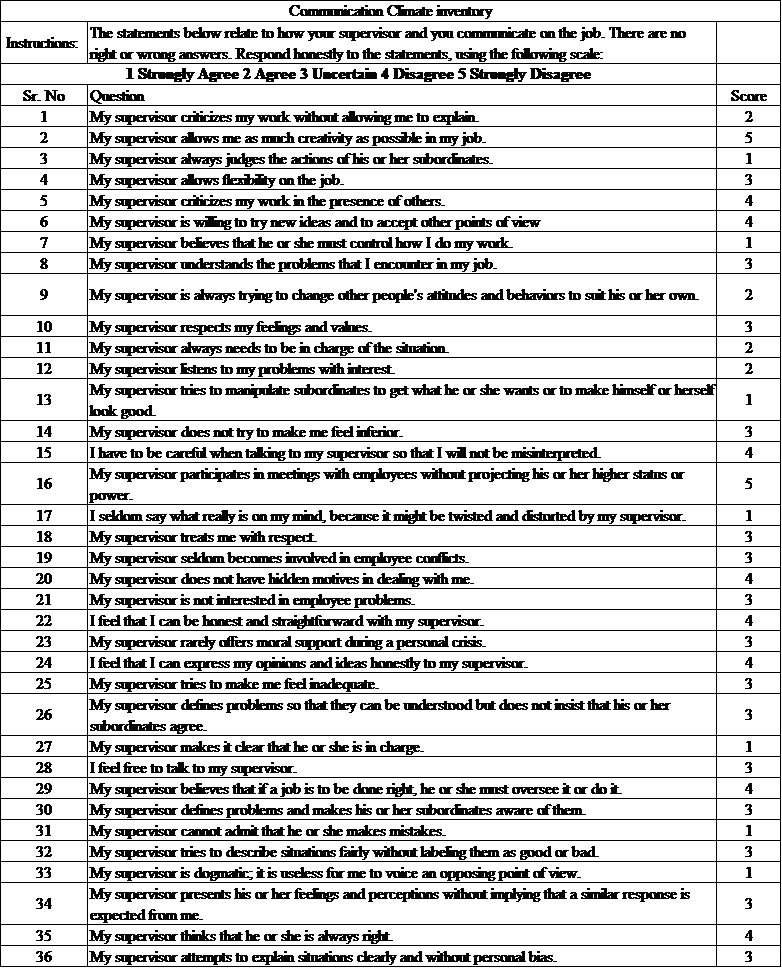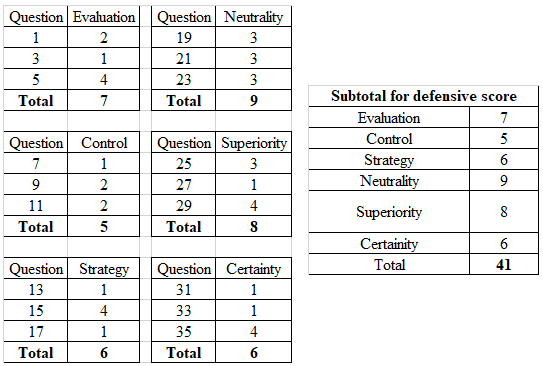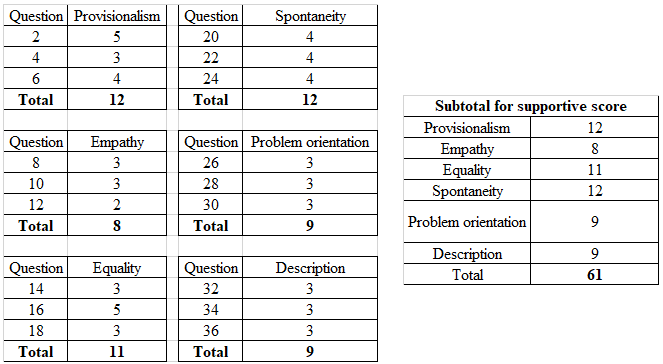Essay on Managing Groups and Teams
Number of words: 748
The effectiveness of any organization is dependent on the communication climate within that organization. Employees are motivated, continue to take more opportunities, have a free and open attitude towards information exchange, and have a constructive resolution for any conflicts if the organization has a supportive environment. On the other hand, the employees tend to keep their views to themselves, suffer a low level of morale, and have less work participation if the organization has a defensive communication climate (Gibb, 1962). Six characteristics for each “supportive environment” and “defensive environment” have been identified by Gibb (1962). The organization’s name is TKT consultants LLP and my work profile as an Assistant consultant in global operations. The communication climate inventory of the organization is carried out and provided the same in Appendix A.
The work environment in the overall organization is a mix of supportive and defensive as there are many teams, and each supervisor has a different outlook towards their team. However, the climate in the global operations department is more defensive due to the dominant supervisor. Therefore, the communication climate inventory created matches the above views as it shows the defensive score of 41, which lies on ‘defensive to neutral’ on the defensive scale, whereas the supportive score of 61, which lies on ‘neutral to a defensive’ on the supportive scale.
The effectiveness, as well as the success of an organization, is dependent on the communication climate. The communication climate within the organization may affect the organizational atmosphere by either encouraging and motivating employees or by demoralizing or hindering the levels of communications. A positive or supportive communication climate provides an opportunity for an employee to participate in the healthy discussion; it also motivates them to provide quality work and be more participative, better outlook towards conflict resolution (Nordin et al., 2014).
There are two types of climates in an organization, supportive and defensive. At present, the workplace climate is defensive. Therefore positive communication techniques must be implemented to enhance communication in the workplace. A favorable climate can be created by the openness of the team members, including a supervisor, trust, comprehensive decision making, considering the ideas of the team, creating an atmosphere in which the team members feel valued rather than ignored, and the most important thing is to listen before judging a team member. Implementing a mechanism such as a feedback system may lead to more open communication and strengthen professional relations. Positive communication will help the team members to cooperate courteously and confidently. It will also create goodwill, honesty towards each other. However, the task of improving workplace communications is comparatively tricky but not impossible. Different team-building games can be utilized in the initial stage to improve communication gradually, showing promising results in the future (Goncalo, Mannix, and Neale, 2009; Kice, 2016).
Since the work environment is inclined to the defensive climate, all the team members, including myself, have become more diplomatic, less outspoken, and kept my ideas. To improve communication in the environment, everyone must participate and learn a few things, including me. In any communication, listening is considered an art, as it provides more information from which the decisions can be made. Unfortunately, many of us are reluctant to listen and miss vital information. The second thing would be sharing the ideas during the meeting; therefore, a person needs to be outspoken too during the meetings and presentations. The last thing would be compassion, which will help understand the colleague’s issues and build trust (Gordon, 2007).
References
Gibb, J. (1962). Defensive communication. Washington: National Training Laboratories.
Goncalo, J., Mannix, E. and Neale, M. (2009). Research on managing groups and teams. Bingley: Emerald Group Publishing Limited.
Gordon, J. (2007). The Pfeiffer book of successful interpersonal communication tools. San Francisco, Calif.: Pfeiffer.
Kice, B. (2016). Developing a Supportive Communication Climate for Virtual Task Groups. The journal of the SCASD, 3(1), pp.103-104.
Nordin, S., Sivapalan, S., Bhattacharyya, E., Ahmad, H., and Abdullah, A. (2014). Organizational Communication Climate and Conflict Management: Communications Management in an Oil and Gas Company. Procedia – Social and Behavioral Sciences, 109, pp.1046-1058.
Appendix A:
Table 1: Survey Questionnaire and corresponding score

Table 2: Defensive score sheet

Table 3: Supportive score sheet
